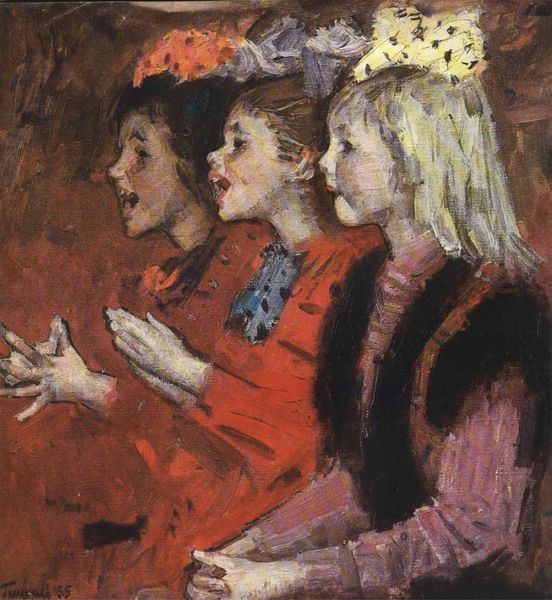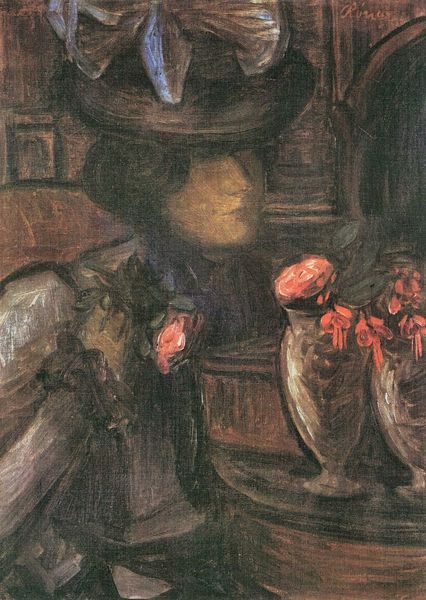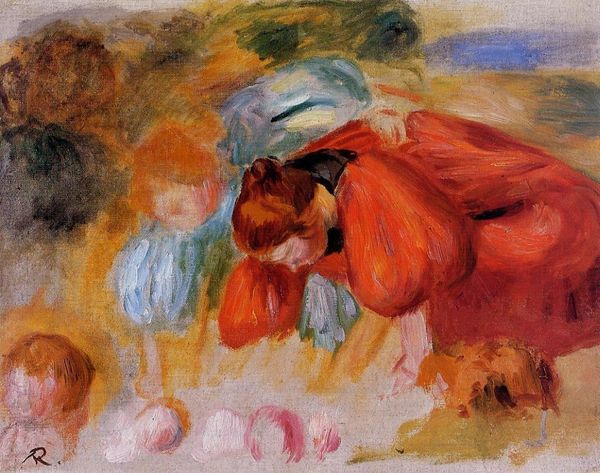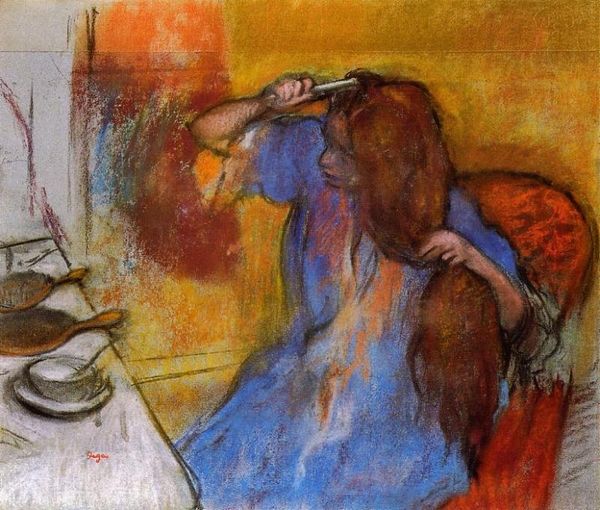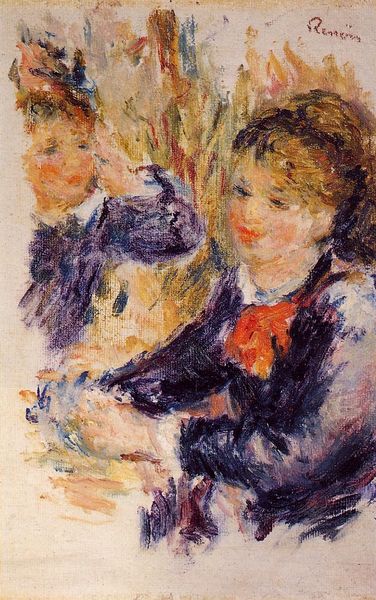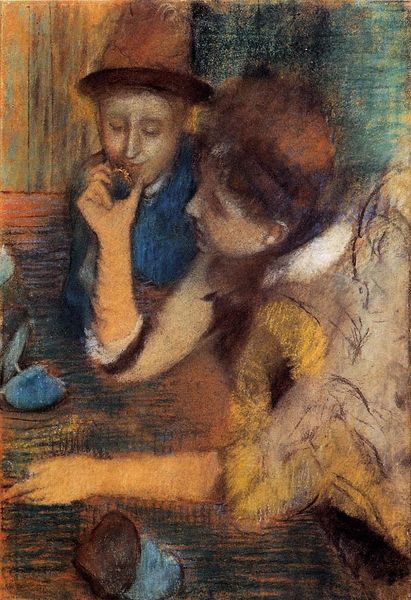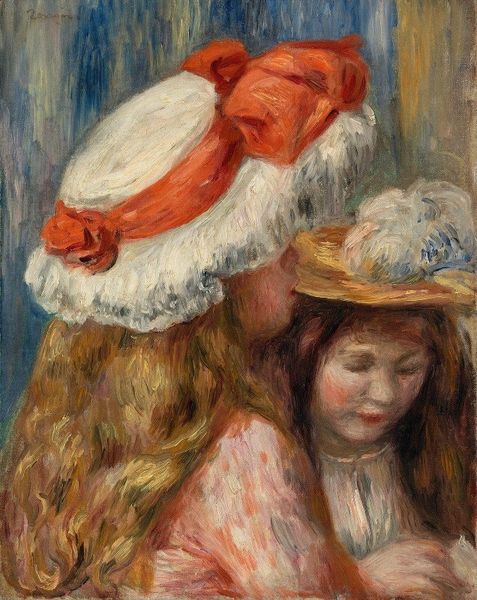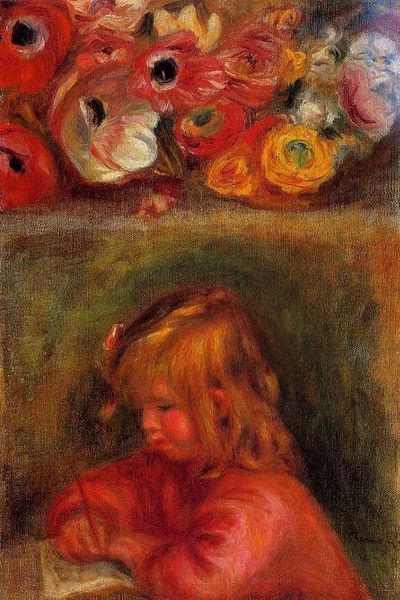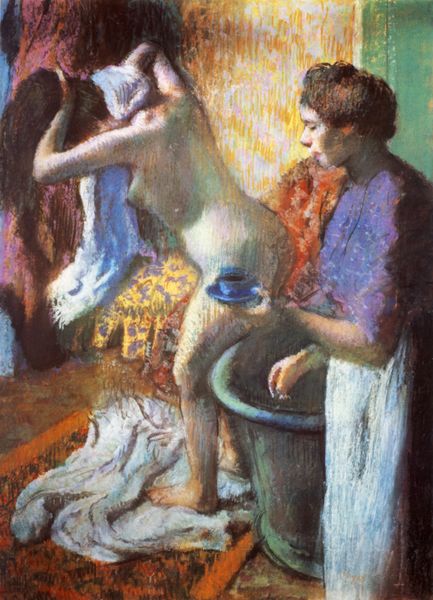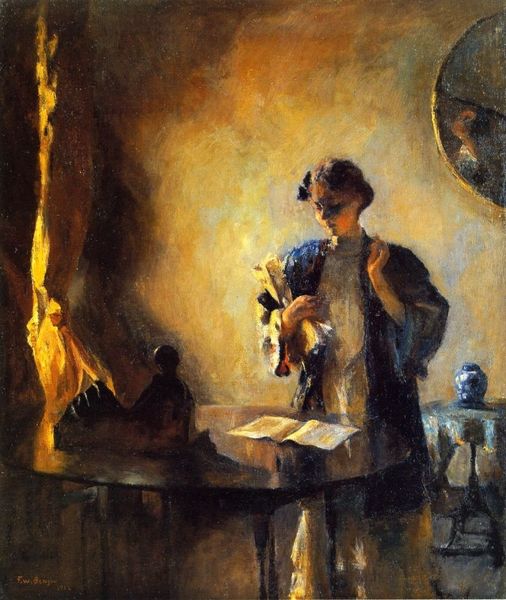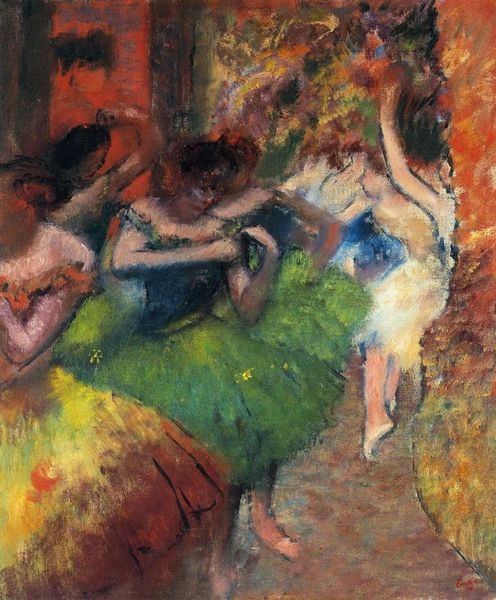
Copyright: Public domain
Curator: Here we have Pierre-Auguste Renoir’s, *A Box in the Theater des Varietes* from 1898, an oil on canvas painting. It exudes a certain effervescence, doesn’t it? Almost dizzying in its softness and shimmering hues. Editor: It’s certainly… vibrant. But the frenetic brushstrokes make it difficult for me to really grasp the tactile experience. It's like these figures are emerging from a swirl of paint. How does Renoir’s technique contribute to the social reading of this scene? Curator: It invites a reading of the social gaze itself. This isn’t simply a portrait of leisure; it’s an examination of looking and being looked at. The painting foregrounds the theatrical space as one where performativity and self-presentation reign supreme. The material culture - the fan, the clothing, the very box seats themselves, is about presentation of a social persona. Editor: Right. Look at the woman’s dress: the deep, teal-colored, heavy folds. The craft involved would involve skilled laborers creating luxury goods consumed by the bourgeois in a culture of leisure. This is also supported by the very means of representation - this painting! Who can afford these art pieces? Curator: Absolutely. This depiction extends beyond surface beauty. This era's theatrical boxes provided a crucial venue for constructing and asserting social identity, reflecting rigid social stratifications and the performative nature of class itself. Consider the historical constraints on women’s roles: their agency was often confined to the domestic and social sphere. This artwork shows how they commanded authority and drew their power through societal performance within strictly prescribed arenas. Editor: You are correct that performance is inherent, but it still exists within material constraint! Renoir's work is often seen as a celebration of beauty, yet the art's economic dimension underlies every choice the painter makes, which then also reflects the consumers, exhibitors, collectors. This wasn’t a revolutionary artistic product by any means, so why still explore it now? Curator: Well, the painting is still highly successful in bringing into question art as a visual portrayal of not just beauty but society's self-image and performative construct, with class always a major player! Editor: Indeed. Seeing how materiality affects production helps understand the bigger picture behind seemingly simple things.
Comments
No comments
Be the first to comment and join the conversation on the ultimate creative platform.
